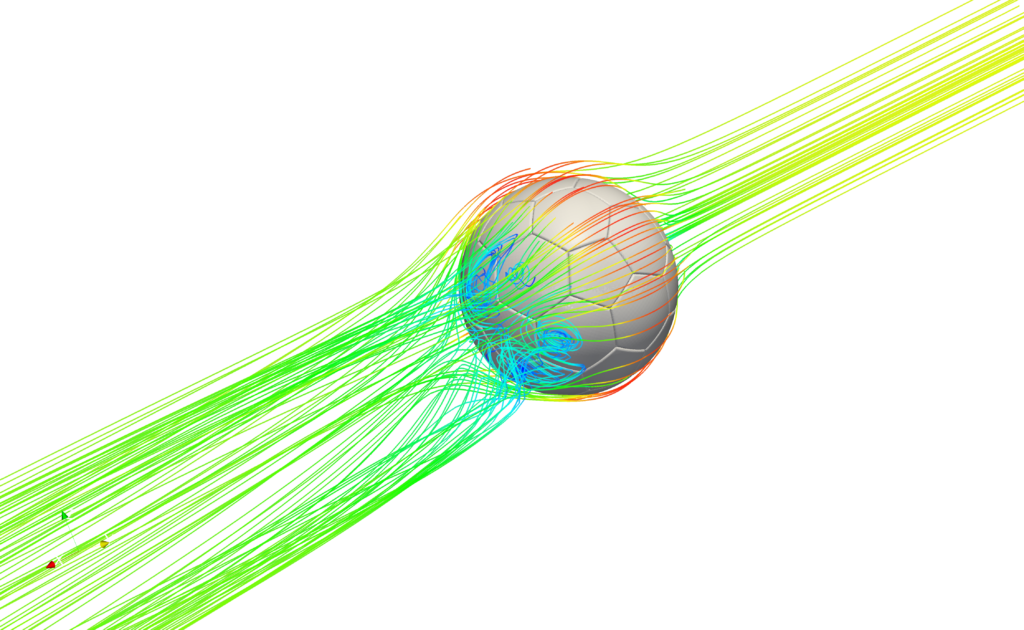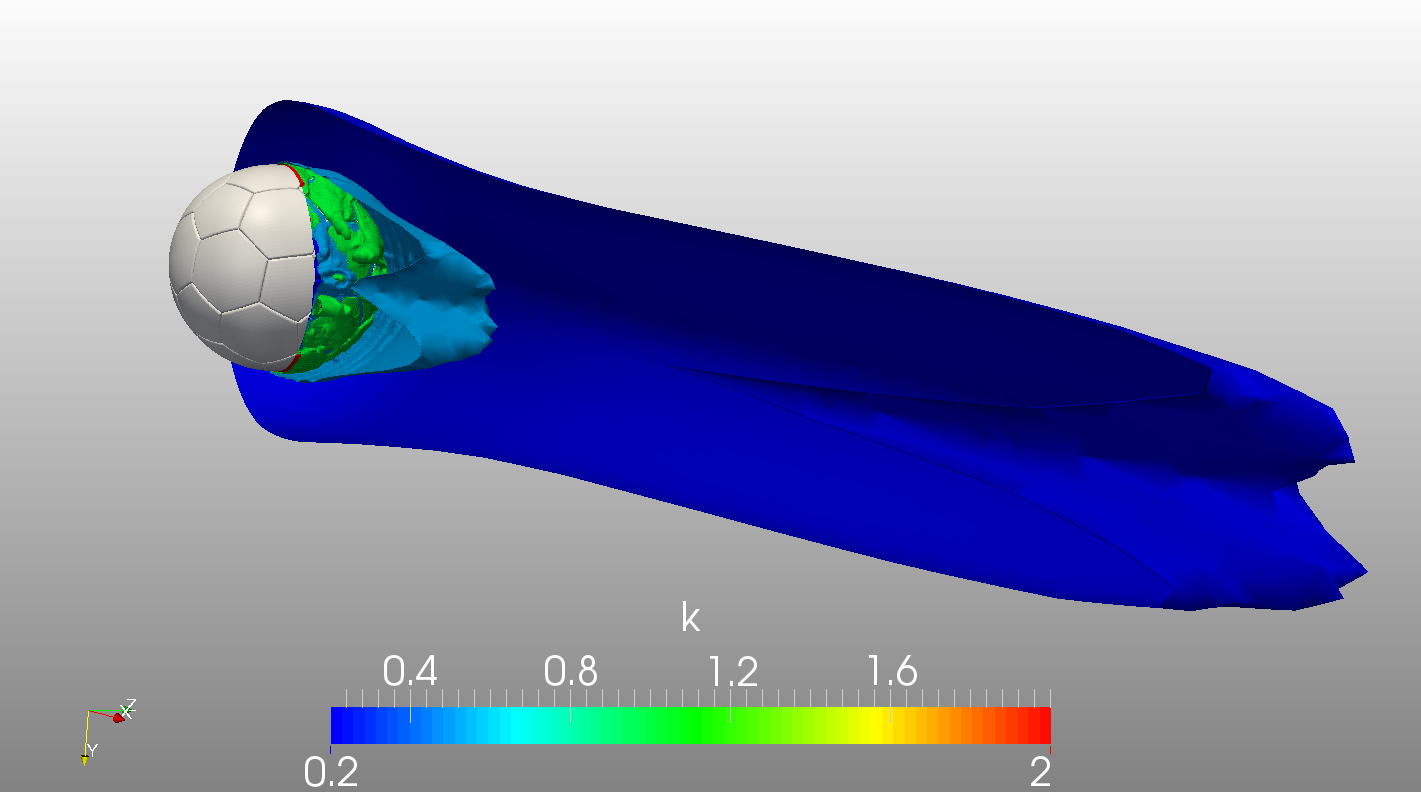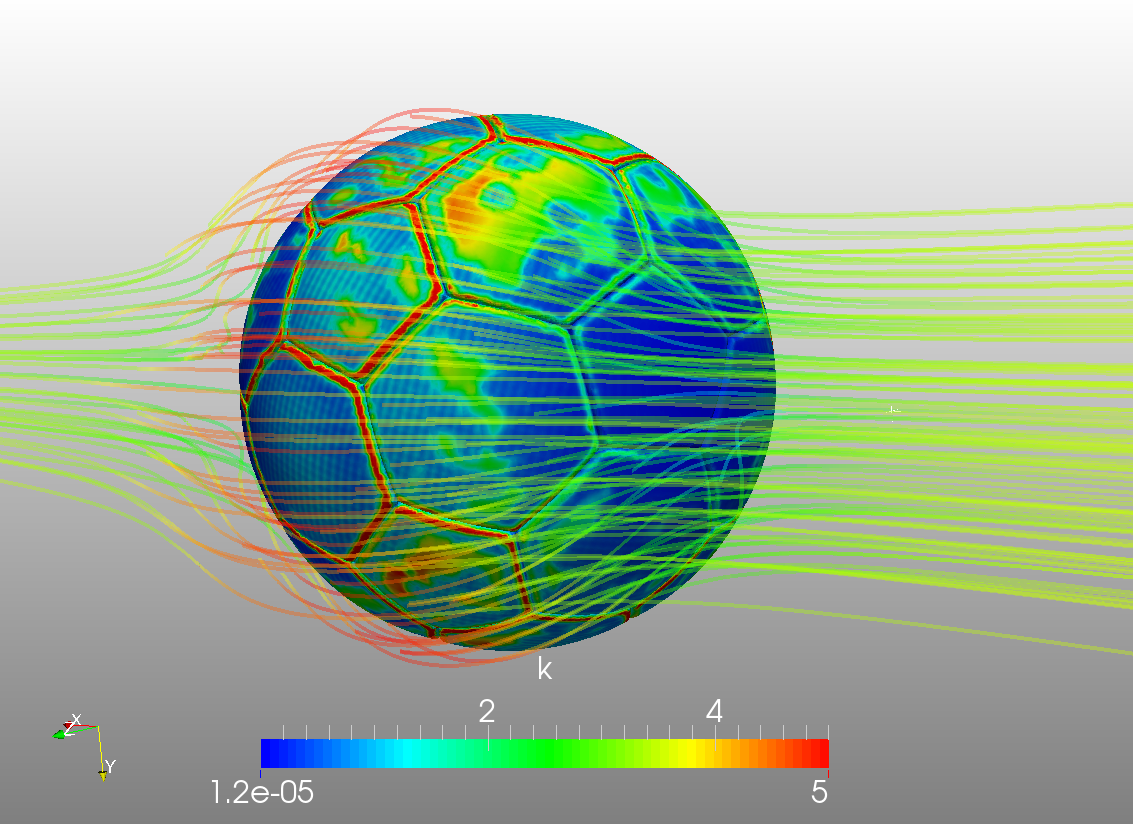Used in many fields, from bridge design and car manufacturing to architecture and medicine, 3D simulation is one of the hidden drivers of the world. What many people don’t know is that simulation—especially aerodynamics simulation—also plays a role in football. Below you can see how flow simulation can be used to investigate the aerodynamic behavior of a football.

Football Aerodynamics Simulation
Aerodynamics has a big influence on game and flight characteristics of a football. According to the FIFA rules, the diameter and roundness of a ball are fixed and are not available as a design parameter. Therefore, only the design and layout of the panels can be optimized and used to manipulate the aerodynamics of the ball. Apart from the drag—which is one of the main factors for flight distance and top speed—the flow structure, including the boundary layer and turbulent effects, influence the trajectory and stability of the ball.
Following complaints from different outfield players and goalkeepers about the official match ball of the 2002 FIFA World Cup, the ball was redesigned for the 2006 FIFA World Cup.
The match ball of the 2006 FIFA World Cup differs from previous balls in having just 14 curved panels, rather than the 32 pentagonal and hexagonal patches that have been standard since the early 1970s. These patches do have a significant impact on the flow field around the ball and therefore result in a different flight characteristic. The effect of the panels on the flow field can be visualized and investigated using fluid flow simulation.

The figure above shows some isosurfaces of the turbulent kinetic energy behind the ball. The figure below shows the turbulent kinetic energy on the surface of the ball, where one can clearly see the effect of the panel layout on the turbulent structures in the flow field around the ball.

A team of researchers, led by Dr. Matt Carre at the Department of Mechanical Engineering at the University of Sheffield, used simulation to investigate the flow around footballs with different panel designs, including the ball that was used in the 2006 World Cup. They were able to demonstrate that the drag of non-spinning soccer balls has fallen by as much as 30% over the last 36 years.
At this point, we cannot say for sure if CFD simulation was the reason why the German national team won the World Cup, but we definitely welcome football clubs interested in running their aerodynamics simulation on the SimScale platform!
Discover all the simulation features provided by SimScale. Download the document below.



